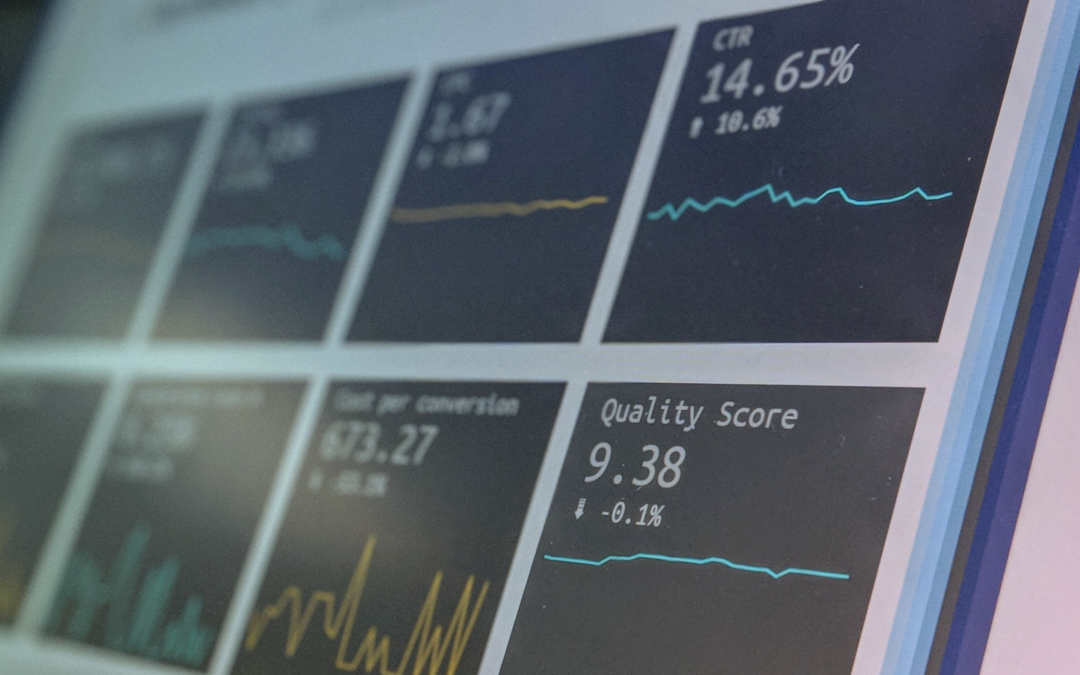Competitive Price Analysis: A Key Tool for Business Success
The analysis of competitive pricing is an essential tool for any business that wants to stay competitive in today’s market. Understanding how your prices compare to those of your competitors provides valuable information for making strategic decisions and adjusting your pricing strategy. In this article, we will explore the importance of competitive price analysis and how this technique can benefit your business.
A Dynamic Pricing software with Artificial Intelligence allows adjusting prices in real-time automatically, manually, or through simulations, to optimize your sales strategies and competitiveness.
Why is Competitive Price Analysis Important?
Competitive price analysis plays a crucial role in the success of your business. Here are some reasons why it is important:
Staying Competitive
The current market is highly competitive, and consumers have a wide range of options to choose from. Competitive price analysis allows you to evaluate how your prices compare to those of your direct competitors. This helps you determine whether your prices are too high or too low compared to the competition, allowing you to adjust your pricing strategies to maintain your competitiveness.
Maximizing Profit Margins
Competitive price analysis also allows you to identify opportunities to maximize your profit margins. If you discover that your prices are significantly lower than those of your competitors and yet you can still maintain a healthy profitability, you may consider raising your prices to increase your margins. On the other hand, if you find that your prices are too high compared to your competitors, you can adjust them to attract more customers and increase your sales.
Identifying Competitive Advantages
Competitive price analysis is not just about comparing numbers. It also provides you with deeper insights into the pricing strategies of your competitors and helps you identify their potential competitive advantages. You can discover if they offer value-added packages, special discounts, or additional services that allow them to justify higher prices. This provides you with key information to improve your own offerings and stand out in the market.
To better understand how our production costs compare to those of the competition, it is essential to conduct a detailed analysis. A good starting point is an example of a competitor price analysis, which will allow us to identify areas for improvement and opportunities to optimize our processes. This approach will not only help us be more competitive but also provide us with a clear perspective on the current market and our competitors’ strategies.
What is Competitive Price Analysis and How is it Used?
Competitive price analysis involves collecting and analyzing information about the prices of your direct competitors. This includes closely monitoring the prices of the products or services they offer and comparing them to your own. The main goal is to gain a clear understanding of how you position yourself in the market in terms of pricing and what measures you can take to improve your competitiveness.
Data Collection
The first step in conducting a competitive price analysis is collecting relevant data. You can obtain this information through various sources, such as your competitors’ websites, advertising brochures, physical stores, market research, or even customer surveys. It is important to ensure that the data collected is accurate and up to date.
Price Comparison
Once you have gathered the necessary data, you need to compare the prices of your products or services with those of your competitors. You can do this through a side-by-side analysis, highlighting key differences in terms of pricing. This will allow you to identify patterns and trends, as well as identify possible price gaps that you can leverage.
Analysis and Interpretation
Once you have conducted the price comparison, it is time to analyze and interpret the data obtained. Look for significant price differences and try to understand the strategies your competitors may be using to justify those prices. This may involve evaluating product quality, level of customer service, additional features, or any other relevant variables.
Strategic Actions
Based on the results of your competitive price analysis, you can take strategic actions to improve your market position. These actions may include adjusting your prices, offering special promotions, improving the quality of your products or services, or developing differentiation strategies to stand out from the competition. The key is to use the collected information effectively to drive your competitive advantage.
Step 1: Define Relevant Competitors
Before starting the price analysis, it is important to identify who your direct and indirect competitors are. Direct competitors are companies that offer products or services similar to yours and directly compete for the same market segment. Indirect competitors, on the other hand, may be companies that offer alternative products or services but still pose a threat to your business.
Once you have identified your competitors, it is time to assess their market share. This involves researching how much sales volume they have compared to your company and how the market is distributed among different players. This information will help you understand the relative position of your company in the market and identify areas of opportunity.
Step 2: Collect Price Data
Now that you have defined your relevant competitors, it is time to gather price data to conduct a comparative analysis. There are several sources of information you can use to obtain this data. Some of them include:
- Manually visit websites and online stores: Visiting your competitors’ websites manually and analyzing the prices of their products or services can be an effective way to gather information about their pricing strategy. Additionally, if your competitors have online stores, you can simulate purchases to know the final prices.
- Catalogs and brochures: Reviewing your competitors’ catalogs and promotional brochures can also provide valuable data about their prices. Pay special attention to the offers and discounts they offer, as this can influence the perceived value of their products or services.
- Interviews and surveys: Conducting interviews with customers or potential customers can provide you with firsthand information about their perception of your competitors’ prices. Additionally, you can use online surveys to gather quantitative data on your customers’ preferences and price perceptions.
- Use Boardfy’s competitor monitoring: This tool allows you to track and analyze your competitors’ prices automatically and quickly. It detects competitors in more than 20 countries and in any channel, be it Google Shopping, Amazon, Idealo, etc.
Once you have collected the price data, it is important to analyze it effectively. You can use techniques such as mean, median, and price range to get an overview of your competitors’ pricing strategy. Additionally, it is helpful to compare prices of similar products or services and identify differences and similarities.
Remember that competitive price analysis is not just about collecting data, but about interpreting it correctly and using it to inform your own pricing decisions. Based on this analysis, you can identify opportunities to differentiate yourself from your competitors and establish pricing strategies that allow you to effectively attract and retain customers.
Step 3: Organize the Collected Data
Once you have collected the price data from your competitors, it is important to organize it effectively to facilitate analysis and understanding. Here are two key aspects to achieve this:
Using Tools and Software to Analyze Price Data
There are various tools and software available that can help you analyze competitive price data more efficiently. These tools allow you to upload and structure the collected data, perform automatic comparisons, visualize trends, and generate detailed reports.
Some of these tools include customizable dashboards, interactive charts, and advanced filtering functions. You can leverage these tools to conduct deeper analysis and gain valuable insights into how your prices compare to those of your competitors.
How to Structure the Gathered Information for Easy Analysis
Once you have collected the price data from your competitors, it is essential to structure it in an organized manner. Here are a few steps you can follow to achieve this:
- Create a spreadsheet or a database to store the collected data.
- Divide the information into columns based on different price elements, such as product name, base price, applied discounts, and special promotions.
- Make sure to include relevant information about the competitors, such as their name, description, and unique features.
- Use formulas and functions to calculate averages, maximums, minimums, and other useful metrics.
- Organize the data in a way that is easy to understand and analyze, grouping it by relevant categories or segments.
By structuring the collected data in an organized manner, you will be prepared to conduct more efficient analysis and draw clear conclusions about how your prices compare to those of the competition.
Step 4: Analyze Competitors’ Prices
Once you have organized the price data, it is time to conduct a detailed analysis to gain meaningful insights. Here are two key steps to carry out this analysis:
Comparison of Prices for Similar Products and Services
Start by comparing the prices of your products or services directly with those of your closest competitors. Look at the differences in base prices, applied discounts, and any special offers they may have. Pay attention to products or services that are similar to yours and analyze how prices vary in each case.
Identification of Patterns and Trends in Prices
As you analyze the data, pay attention to the patterns and trends you can identify. You can observe if there is a significant difference in prices between different competitors, if there are seasonal fluctuations, or if certain products have higher or lower prices than others.
Additionally, consider the pricing strategies used by your competitors. Ask yourself if they offer promotional packages, volume discounts, loyalty programs, or other strategies that may influence their prices. This will help you better understand how they position themselves in the market and what actions you can take to adjust your pricing strategy.
Step 5: Interpret the Results
Once you have conducted the analysis of competitors’ prices, it is crucial to interpret the results effectively. Here are two important considerations to keep in mind:
How to Use Analyzed Data to Make Strategic Decisions
The data obtained from competitive price analysis is valuable for making strategic decisions in your business. Use the information to evaluate whether your prices are competitive or if you need to adjust them to maintain your position in the market.
Consider the price-value relationship for your customers. Assess whether your products or services offer additional features or superior quality that justify higher prices compared to the competition. Likewise, analyze if you can adjust prices to attract a broader segment of customers without compromising your profitability.
Important Considerations When Interpreting the Results of Price Analysis
Remember that competitive price analysis is a tool for obtaining valuable information, but it should not be the sole factor in your pricing decisions. Consider other factors such as your internal costs, market demand, customer perceived value, and business objectives.
Additionally, keep regular track of competitive price analysis. The market is dynamic, and prices can change rapidly. Conduct periodic analyses to stay updated on trends and changes in your competitors’ pricing strategies, and adjust your approach accordingly.
Step 6: Apply Conclusions to Pricing Strategy
Once you have drawn solid conclusions from the competitive price analysis, it is time to apply those conclusions to your pricing strategy. Here are two important aspects to consider:
How to Adjust Prices Based on Competitive Analysis Findings
If you find that your prices are significantly higher than those of your direct competitors and cannot be justified by additional features or superior quality, you may want to consider reducing prices to increase your competitiveness. This can attract more customers and generate higher sales.
On the other hand, if you find that your prices are lower than those of your competitors and you still maintain a healthy margin, you could consider gradually increasing your prices to improve your profit margins. Make sure to clearly communicate the additional value you offer compared to the competition to support the price increase.
Strategies to Stay Competitive in the Market
In addition to adjusting your prices, there are other strategies you can implement to stay competitive in the market. Some ideas include:
- Offering value-added packages: Add additional features, services, or benefits to your products or services to differentiate yourself from the competition.
- Providing exceptional customer service: Focus on delivering excellent customer service and building strong relationships with your customers.
- Implementing effective marketing and promotional campaigns: Use marketing and promotional strategies to highlight the unique selling points of your products or services and attract new customers.
- Emphasizing product quality: Ensure that the quality of your products or services is superior to that of your competitors and communicate this value to your customers.
- Exploring new market segments: Identify new market segments or niche markets that are not well served by your competitors and tailor your offerings to meet their specific needs.
Step 7: Monitor and Update Price Analysis
Competitive price analysis should not be a static process but rather an ongoing exercise. Here are two important considerations in this regard:
The Importance of Continuously Tracking Competitors’ Prices
The market and pricing strategies of your competitors can change over time. Therefore, it is crucial to continuously track competitors’ prices to stay updated and respond quickly to any changes. Keep an eye on your competitors’ price movements, the promotions they offer, and any changes in their value proposition.
How to Update and Improve Price Analysis Over Time
As you collect more data and gain more insights into competitors’ prices, you can improve your analysis over time. Use the lessons learned and the conclusions drawn from previous analyses to refine your approach. Update your analysis tools and methods as necessary to ensure they remain effective and efficient.
Additionally, consider expanding your analysis to include new competitors or additional products and services. This will provide you with a more comprehensive view of the competitive landscape and enable you to make more informed decisions, for example, by using tools such as competitor monitoring.
Conclusion
In conclusion, conducting competitive price analysis can be a valuable strategy for enhancing your pricing strategy. Through the key steps we have explored in this article, you can gather crucial information that will enable you to make informed and competitive decisions.
It is important to understand the distinction between direct and indirect competitors and assess their market share. Collecting price data from various sources, such as websites, surveys, and competitor monitoring tools, is essential for conducting an effective analysis. Once the data is collected, organizing it in a structured manner and utilizing tools and software for analysis will facilitate the interpretation of results.
Interpreting the analyzed data and using it to make strategic decisions is crucial. Consider the value your products or services offer, the perception of value by customers, and the strategies employed by your competitors. Based on the findings, you can adjust your prices and implement strategies to maintain competitiveness in the market.
Continuous monitoring of competitors’ prices and regular updates to your analysis will ensure that your pricing strategy remains relevant. By applying the conclusions drawn from the analysis and adopting effective pricing strategies, such as value-added offerings and superior customer service, you can position your business for success.
Remember that each business is unique, so it is important to adapt these strategies to your specific situation and the needs of your customers. By staying vigilant and responsive to changes in the market and competitors’ prices, you can maintain your competitive edge and drive long-term success.
Frequently Asked Questions about Competitive Price Analysis
- What is the difference between direct and indirect competitors? Direct competitors offer similar products or services, while indirect competitors satisfy the same needs but in a different way.
- What are recommended sources for obtaining competitive price data? You can use online tools, visit physical stores, conduct customer interviews, or hire market research services.
- Is it legal to collect competitor price information? It is important to ensure that the collection of price information is legal and ethical, respecting applicable regulations and laws in your area.
- How can I identify patterns in competitors’ prices? You can use analysis tools and charts to visualize the data and identify key insights.
- What should I consider when interpreting the results of price analysis? Factors such as product quality, customer perceived value, and competitors’ pricing strategies should be taken into account.
- How long does it take to conduct competitive price analysis? The time required may vary depending on market complexity and data availability, but it is a process that requires time and dedication. In the case of Boardfy, competitor monitoring is updated every 3-4 hours.
- Should I adjust my prices based on competitors or keep them stable? The answer depends on various factors, such as your market position, product or service demand, and customer value proposition.
- What are some effective strategies to stay competitive in terms of pricing? Strategies include offering selective promotions and discounts, providing additional value through extra services, optimizing costs, and differentiating yourself in terms of quality and customer experience. Don’t forget to implement a dynamic pricing tool like dynamic pricing to keep your prices consistently competitive.
- What is the best way to continuously monitor competitors’ prices? Use competitor monitoring tools like Boardfy and set up alerts to stay informed about changes in competitors’ prices.
- How often should I update my price analysis? It is advisable to regularly update your price analysis to keep it relevant and tailored to changes in the market and competition. Boardfy updates competitors’ data every 3-4 hours.
The fastest monitoring and dynamic pricing platform worldwide
Boardfy allows you to monitor your competitors or distributors, make automatic price changes, optimize your Google Shopping campaigns, and much more.
7-days free trial. No credit card required.








